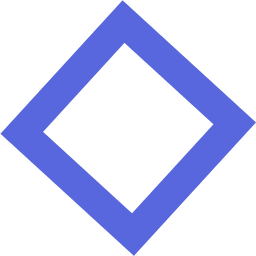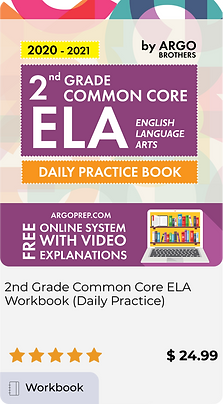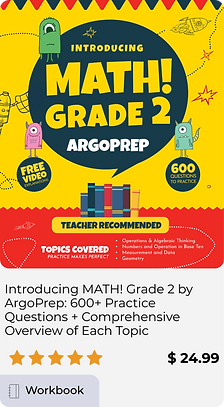.png)

Second Grade Common Core Math Standards
With forty-one states adopting the common core curriculum, there is a very good chance your child is following the common core state standards. Below we will provide you a detailed insight into the second-grade common core math standards and with valuable resources to help your child succeed in school and at home.
What is Common Core?
This is one of the most frequent questions we get asked by parents and across the board, there is confusion when it comes to the words "common core". Very simply, Common Core is a comprehensive list of standards that students need to know for English Language Arts (ELA) and math from kindergarten to 12th grade.
Who created these common core standards?
Highly qualified teachers and experts all over the United States helped create the framework of what we know today as the common core standards. The main objective of creating these common core standards is so students can develop their critical-thinking skills, analytical skills, and problem-solving skills.
Grade 2 Common Core Math Standards Overview
There are four main topics covered in the second-grade common core math standards.
The chart below provides a comprehensive review of the learning standards for second grade.
Operations & Algebraic Thinking
Represent and solve problems involving addition and subtraction.
2.OA.A.1
Use addition and subtraction within 100 to solve one- and two-step word problems involving situations of adding to, taking from, putting together, taking apart, and comparing, with unknowns in all positions, e.g., by using drawings and equations with a symbol for the unknown number to represent the problem.
Add and subtract within 20.
2.OA.B.2
Fluently add and subtract within 20 using mental strategies. By the end of Grade 2, know from memory all sums of two one-digit numbers.
Work with equal groups of objects to gain foundations for multiplication.
2.OA.C.3
Determine whether a group of objects (up to 20) has an odd or even number of members, e.g., by pairing objects or counting them by 2s; write an equation to express an even number as a sum of two equal addends.
2.OA.C.4
Use addition to find the total number of objects arranged in rectangular arrays with up to 5 rows and up to 5 columns; write an equation to express the total as a sum of equal addends.
.png)
Numbers &
Operation in Base Ten
Understand place value.
2.NBT.A.1
Understand that the three digits of a three-digit number represent amounts of hundreds, tens, and ones; e.g., 605 equals 6 hundreds, 0 tens, and 5 ones.
2.NBT.A.2
Count within 1000; skip-count by 5s, 10s, and 100s.
2.NBT.A.3
Read and write numbers to 1000 using base-ten numerals, number names, and expanded form.
2.NBT.A.4
Compare two three-digit numbers based on meanings of the hundreds, tens, and ones digits, using >, =, and < symbols to record the results of comparisons.
Use place value understanding and properties of operations to add and subtract.
2.NBT.C.5
Fluently add and subtract within 100 using strategies based on place value, properties of operations, and/or the relationship between addition and subtraction.
2.NBT.C.6
Add up to four two-digit numbers using strategies based on place value and properties of operations.
2.NBT.C.7
Add and subtract within 1000, using concrete models or drawings and strategies based on place value, properties of operations, and/or the relationship between addition and subtraction; relate the strategy to a written method. Understand that in adding or subtracting three-digit numbers, one adds or subtracts hundreds and hundreds, tens and tens, ones and ones; and sometimes it is necessary to compose or decompose tens or hundreds.
2.NBT.C.8
Mentally add 10 or 100 to a given number 100-900, and mentally subtract 10 or 100 from a given number 100-900.
2.NBT.C.9
Explain why addition and subtraction strategies work, using place value and the properties of operations.
.png)
Measurement & Data
Measure and estimate lengths in standard units.
2.MD.A.1
Measure the length of an object by selecting and using appropriate tools such as rulers, yardsticks, meter sticks, and measuring tapes.
2.MD.A.2
Measure the length of an object twice, using length units of different lengths for the two measurements; describe how the two measurements relate to the size of the unit chosen.
2.MD.A.3
Estimate lengths using units of inches, feet, centimeters, and meters.
2.MD.A.4
Measure to determine how much longer one object is than another, expressing the length difference in terms of a standard length unit.
Relate addition and subtraction to length.
2.MD.B.5
Use addition and subtraction within 100 to solve word problems involving lengths that are given in the same units, e.g., by using drawings (such as drawings of rulers) and equations with a symbol for the unknown number to represent the problem.
2.MD.B.6
Represent whole numbers as lengths from 0 on a number line diagram with equally spaced points corresponding to the numbers 0, 1, 2, ..., and represent whole-number sums and differences within 100 on a number line diagram.
Work with time and money.
2.MD.C.7
Tell and write time from analog and digital clocks to the nearest five minutes, using a.m. and p.m.
2.MD.C.8
Solve word problems involving dollar bills, quarters, dimes, nickels, and pennies, using $ and ¢ symbols appropriately. Example: If you have 3 dimes and 4 pennies, how many cents do you have?
Work with time and money.
2.MD.D.9
Generate measurement data by measuring lengths of several objects to the nearest whole unit, or by making repeated measurements of the same object. Show the measurements by making a line plot, where the horizontal scale is marked off in whole-number units.
2.MD.D.10
Draw a picture graph and a bar graph (with single-unit scale) to represent a data set with up to four categories. Solve simple put-together, take-apart, and compare problems using the information presented in a bar graph.
.png)
.png)

Geometry
Reason with shapes and their attributes.
2.G.A.1
Recognize and draw shapes having specified attributes, such as a given number of angles or a given number of equal faces. Identify triangles, quadrilaterals, pentagons, hexagons, and cubes.
2.G.A.2
Partition a rectangle into rows and columns of same-size squares and count to find the total number of them.
2.G.A.3
Partition circles and rectangles into two, three, or four equal shares, describe the shares using the words halves, thirds, half of, a third of, etc., and describe the whole as two halves, three thirds, four fourths. Recognize that equal shares of identical wholes need not have the same shape.
*The second-grade common core math standards were created by the NGA Center for Best Practices (NGA Center) and the Council of Chief State School Officers (CCSSO). NGA Center/CCSSO is not affiliated with CommonCoreMath by ArgoPrep nor do they endorse any ArgoPrep products or programs.
.png)
2nd-Grade Curriculum
Now that we understand the four main topics covered in second-grade math (Operations & Algebraic Thinking, Numbers & Operations in Base Ten, Measurement & Data, and Geometry), let's review in more detail what students are expected to learn throughout the year.

Operations and Algebraic Thinking
Addition and subtraction continue in the second grade, where students will be introduced to the problems that deal with numbers from 0 to 100. There are three main types of questions in this section.
-
Two-step word problem
-
Solving problems that require changing the unknown.
-
Solving problems that start with the unknown.
By the time students are in the second grade, they are expected to be able to identify numbers and indicate if they are more or less than those in comparison. Under this topic, students will learn how to identify even and odd numbers.
If you are looking for a great way to teach the concept or add and even, use objects! Ask the student to group objects in values of two, three, and four. They are then required to divide these groups further into equals. The groups that cannot be separated into equals are termed as odd numbers, while those that are equal are even numbers.


Numbers & Operations in Base 10
In the second-grade, students learn the place value representations in a three-digit number, i.e., ones, tens, and hundreds. For example, in the number 340, 3 represents hundreds, 4 represents tens, and 0 represents one.
Students are expected to:
-
Point out the value of a given unit in a three-digit number.
(Example) In the number 340, the 3 stands for 300, and its place value is hundreds.
-
Understand and use the place value language to describe amounts. (Example)
The place value of 3 is in the hundreds place.
The place value of 4 is in the tens place.
The place value of 0 is in the ones place.
-
Understand and remember that three hundred can be represented as 300 single units.
-
Understand and be able to group and regroup numbers when solving addition and subtraction problems.
.png)

Measurement & Data
In the second-grade, are taught and expected to understand the concept of measurement. They should be able to determine the length of an object by using the standard measuring tools such as a ruler, measuring tape, or a meter stick.
Students will learn about different units such as measuring in feet, meters, inches, and centimeters. Additionally, students should be able to estimate the length of any given objects.
While measuring various objects, students can be asked to determine the difference in the length of the different objects through subtraction. Furthermore, students are expected to represent the data they have collected to the nearest unit. This representation can be done on a line plot where the horizontal line is marked in whole numbers, or bar graphs with single-unit scale for more than one category.
Aside from measuring and representing data, another big topic covered in this section is the concept of time. Second graders will build upon what they previously learned in first grade and they will be able to tell time to the nearest five-minutes while using "a.m" and "p.m".
Finally, the last topic in this section covers the concept of money. Second-grade students should be able to assign the correct value to a drawing of a penny, nickel, dime, quarter, and dollar. Basic word problems involving money are also introduced at this grade level.
(Example) If Mary has 5 dimes and 2 pennies, how many cents does she have?
If you haven't already done so, be sure to check out our award-winning K-8 Math & ELA program to help boost your child's score and increase confidence.

Geometry
A more complex geometric attribute made up of 2d and 3d shapes are introduced at the second-grade level. These shapes include cylinder, hexagon, circles, octagons, squares, triangles, etc., unlike in the first grade, where shapes were simpler to draw and describe.
Students are introduced to symmetry, where they are required to find lines through activities such as folding shapes and using mirrors.
.png)
Boost your math score
If you are looking to boost your child's math score, you've come to the right place! Aside from the free learning resources Common Core Math by ArgoPrep has to offer, our award-winning comprehensive K-8 Math & ELA subscription-based platform offers everything your child needs to boost their scores.

.png)
.png)
.png)
.png)
.png)
.png)